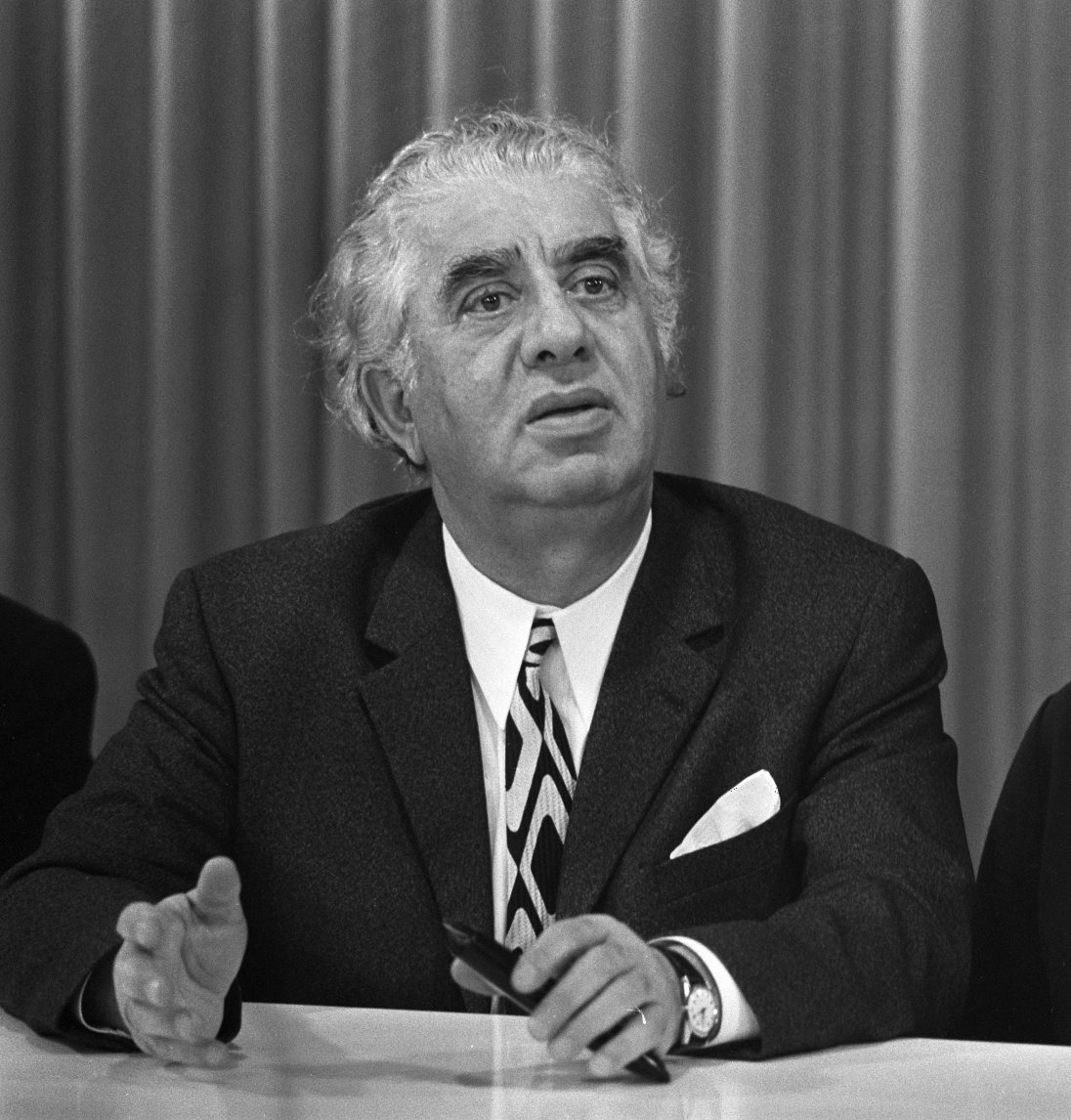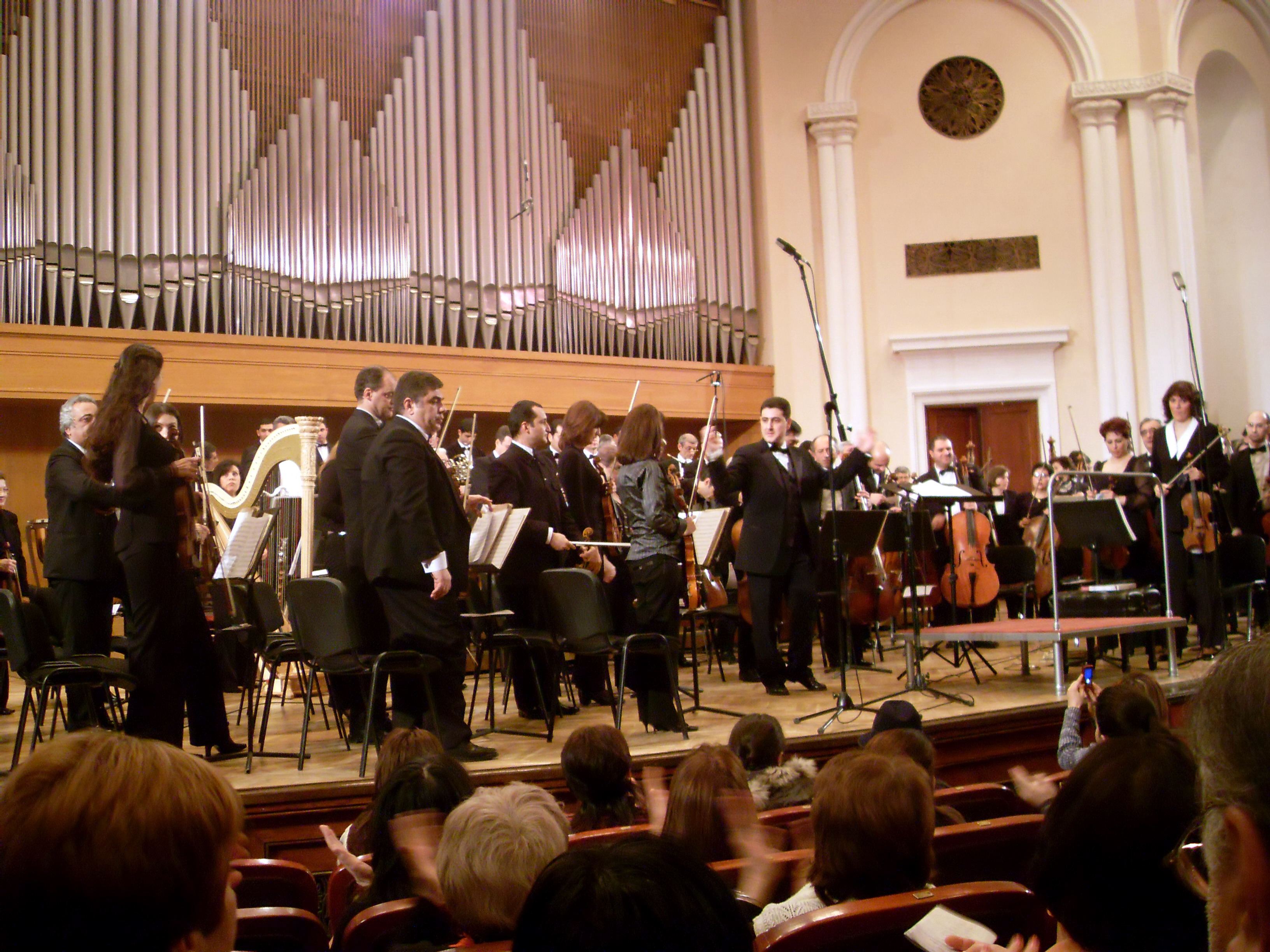|
Masquerade (Khachaturian)
''Masquerade'' was written in 1941 by Aram Khachaturian as incidental music for a production of the play of the same name by Russian poet and playwright Mikhail Lermontov. The music is better known in the form of a five-movement suite. Background Khachaturian was asked to write music for a production of ''Masquerade'' being produced by the director Ruben Simonov. The famous waltz theme in particular gave Khachaturian much trouble in its creation: moved by the words of the play's heroine, Nina – "How beautiful the new waltz is! ... something between sorrow and joy gripped my heart." – the composer struggled to "find a theme that I considered beautiful and new". His former teacher, Nikolai Myaskovsky, attempted to help Khachaturian by giving him a collection of romances and waltzes from Lermontov's time; though these did not give immediate inspiration, Khachaturian admitted that "had it not been for the strenuous search" for the appropriate style and melodic inspiration, he ... [...More Info...] [...Related Items...] OR: [Wikipedia] [Google] [Baidu] |
Aram Khachaturian
Aram Ilyich Khachaturian (; rus, Арам Ильич Хачатурян, , ɐˈram ɨˈlʲjitɕ xətɕɪtʊˈrʲan, Ru-Aram Ilyich Khachaturian.ogg; hy, Արամ Խաչատրյան, ''Aram Xačʿatryan''; 1 May 1978) was a Soviet and Armenian composer and conductor. He is considered one of the leading Soviet composers. Born and raised in Tbilisi, the multicultural capital of Georgia, Khachaturian moved to Moscow in 1921 following the Sovietization of the Caucasus. Without prior music training, he enrolled in the Gnessin Musical Institute, subsequently studying at the Moscow Conservatory in the class of Nikolai Myaskovsky, among others. His first major work, the Piano Concerto (1936), popularized his name within and outside the Soviet Union. It was followed by the Violin Concerto (1940) and the Cello Concerto (1946). His other significant compositions include the '' Masquerade Suite'' (1941), the Anthem of the Armenian SSR (1944), three symphonies (1935, 1943, 1947), and ar ... [...More Info...] [...Related Items...] OR: [Wikipedia] [Google] [Baidu] |
Mazurka
The mazurka (Polish: ''mazur'' Polish ball dance, one of the five Polish national dances and ''mazurek'' Polish folk dance') is a Polish musical form based on stylised folk dances in triple meter, usually at a lively tempo, with character defined mostly by the prominent mazur's "strong accents unsystematically placed on the second or third beat". The mazurka, alongside the polka dance, became popular at the ballrooms and salons of Europe in the 19th century, particularly through the notable works by Frédéric Chopin. The mazurka (in Polish ''mazur'', the same word as the mazur) and mazurek (rural dance based on the mazur) are often confused in Western literature as the same musical form. History The folk origins of the ''mazurka'' are three Polish folk dances which are: * '' mazur'', most characteristic due to its inconsistent rhythmic accents, * slow and melancholic ''kujawiak'', * fast ''oberek''. The ''mazurka'' is always found to have either a triplet, trill, dot ... [...More Info...] [...Related Items...] OR: [Wikipedia] [Google] [Baidu] |
Compositions By Aram Khachaturian
This is a list of compositions by Armenian composer Aram Khachaturian. Ballets *''Shchastye'' ("Happiness"; Yerevan, 1939) *'' Gayane'' (1939–41), which includes the famous Sabre Dance *''Spartacus'' (1950–54) Orchestral *Symphonies **Symphony No. 1 (1934) ** Symphony No. 2 ''The Bell Symphony'' (two versions: 1943, 1944) ** Symphony No. 3 ''Symphony-Poem'' (1947) *Dance Suite (1933) *Suite from ''Gayane'' No. 1 (1943) *Suite from ''Gayane'' No. 2 (1943) *Suite from ''Gayane'' No. 3 (1943) * State Anthem of the Armenian SSR (1944) *''The Russian Fantasy'' (1944) * Suite from ''Masquerade'' (1944) *''Ode in Memory of Vladimir Ilich Lenin'' (1948) *Suite from ''Battle of Stalingrad'' (1949) *''Triumphal Poem'', a festive poem (1950) *Suite from ''The Valencian Widow'' (1952) *Suite from ''Spartacus'' No. 1 (1955) *Suite from ''Spartacus'' No. 2 (1955) *Suite from ''Spartacus'' No. 3 (1955) *Symphonic Pictures from ''Spartacus'' (1955) *Greeting (or ''Salutatory'') Overture (1 ... [...More Info...] [...Related Items...] OR: [Wikipedia] [Google] [Baidu] |
Incidental Music
Incidental music is music in a play, television program, radio program, video game, or some other presentation form that is not primarily musical. The term is less frequently applied to film music, with such music being referred to instead as the film score or soundtrack. Incidental music is often background music, and is intended to add atmosphere to the action. It may take the form of something as simple as a low, ominous tone suggesting an impending startling event or to enhance the depiction of a story-advancing sequence. It may also include pieces such as overtures, music played during scene changes, or at the end of an act, immediately preceding an interlude, as was customary with several nineteenth-century plays. It may also be required in plays that have musicians performing on-stage. History The use of incidental music dates back at least as far as Greek drama. A number of classical composers have written incidental music for various plays, with the more famous e ... [...More Info...] [...Related Items...] OR: [Wikipedia] [Google] [Baidu] |
Armenian Music
The music of Armenia ( hy, հայկական երաժշտություն ''haykakan yerazhshtut’yun'') has its origins in the Armenian highlands, dating back to the 3rd millennium BCE, and is a long-standing musical tradition that encompasses diverse secular and religious, or sacred, music (such as the ''sharakan'' Armenian chant and '' taghs'', along with the indigenous '' khaz'' musical notation). Folk music was notably collected and transcribed by Komitas Vardapet, a prominent composer and musicologist, in the late nineteenth and early twentieth centuries, who is also considered the founder of the modern Armenian national school of music. Armenian music has been presented internationally by numerous artists, such as composers Aram Khachaturian, Alexander Arutiunian, Arno Babajanian, Haig Gudenian, and Karen Kavaleryan as well as by traditional performers such as duduk player Djivan Gasparyan. Melodic basis Traditional Armenian folk music as well as Armenian church mus ... [...More Info...] [...Related Items...] OR: [Wikipedia] [Google] [Baidu] |
Loris Tjeknavorian
Loris Haykasi Tjeknavorian ( hy, Լորիս Ճգնավորյան; fa, لوریس چکناواریان; born 13 October 1937) is an Iranian Armenians, Iranian Armenian composer and conductor. He has appeared internationally as a conductor, serving as the principal conductor of the Armenian Philharmonic Orchestra from 1989 to 1998 and later from 1999 to 2000. As a composer Tjeknavorian has written 6 operas, 5 symphonies, choral works, chamber music, ballet music, piano and vocal works, concerto, concerti for piano, violin, guitar, cello and pipa, as well as music for documentary and feature films. Among his best known works are the opera ''Rostam and Sohrab (opera), Rostam and Sohrab'', based on the story of Rostam and Sohrab from Ferdowsi's ''Shahnameh'', and the ballet ''Simorgh''. After study at the Vienna Music Academy, with Carl Orff at the Salzburg Mozarteum and the University of Michigan, he taught at the Tehran Conservatory. While based in the United Kingdom 1975 to 1985, ... [...More Info...] [...Related Items...] OR: [Wikipedia] [Google] [Baidu] |
Armenian Philharmonic Orchestra
The Armenian National Philharmonic Orchestra (''ANPO'') (Armenian: Հայաստանի ազգային ֆիլհարմոնիկ նվագախումբ) is the national orchestra of Armenia. It was founded in 1925 as a symphony orchestra of the Yerevan State Conservatory. Now it performs in Khachaturian Hall, Yerevan. Over the years, conductors Arshak Adamian, Alexander Spendiarian, Ohan Durian, Valeri Gergiev, Loris Tjeknavorian, etc. directed the orchestra. Since its foundation, the orchestra has performed most of the classical repertoire. Many famous artists as David Oistrach, Sviatoslav Richter, Mstislav Rostropovich, David Geringas, Boris Berezovsky, Ian Gillan have appeared with the orchestra. Aram Khachaturian, Dmitri Kabalevsky and others have conducted their works at the APO. More than 30 CDs have been released with the APO recordings. Principal conductors * Eduard Topchjan (2000–) *Loris Tjeknavorian (1999–2000) *Mikael Avetisyan (1998–1999) *Loris Tjek ... [...More Info...] [...Related Items...] OR: [Wikipedia] [Google] [Baidu] |
Neeme Järvi
Neeme Järvi (; born 7 June 1937) is an Estonian American conductor. Early life Järvi was born in Tallinn. He initially studied music there, and later in Leningrad at the Leningrad Conservatory under Yevgeny Mravinsky, and Nikolai Rabinovich, among others. Early in his career, he held posts with the Estonian Radio and Television Symphony Orchestra, the Estonian National Symphony Orchestra and the Estonian National Opera in Tallinn. In 1971 he won first prize in the International Conductors Competition at the Accademia Nazionale di Santa Cecilia in Rome. Järvi emigrated to the United States in 1980 with his family. He became an American citizen in 1985. Career In 1982, he became the principal conductor of the Gothenburg Symphony Orchestra, and held the post for 22 years, the longest-serving principal conductor in the orchestra's history. During his Gothenburg tenure, the recording profile and reputation of the orchestra greatly increased. He also helped to secure corporate ... [...More Info...] [...Related Items...] OR: [Wikipedia] [Google] [Baidu] |
Scottish National Orchestra
The Royal Scottish National Orchestra (RSNO) ( gd, Orcastra Nàiseanta Rìoghail na h-Alba) is a British orchestra, based in Glasgow, Scotland. It is one of the five national performing arts companies of Scotland. Throughout its history, the Orchestra has played an essential part in Scotland’s musical life, including performing at the opening ceremony of the Scottish Parliament building in 2004. Its music centre and rehearsal studios are directly connected to the Glasgow Royal Concert Hall. The RSNO performs throughout Scotland, at such venues as Glasgow Royal Concert Hall, Usher Hall, Caird Hall, Aberdeen Music Hall, Perth Concert Hall and Eden Court Theatre. Thomas Søndergård is the orchestra's current music director, since 2018. History The precursor ensemble to the RSNO was established in 1843 to accompany the Glasgow Choral Union (today known as the RSNO Chorus). In 1891, the orchestra was recognised formally as the ''Scottish Orchestra'', with George Henschel as the ... [...More Info...] [...Related Items...] OR: [Wikipedia] [Google] [Baidu] |
Kirill Kondrashin
Kirill Petrovich Kondrashin (, ''Kirill Petrovič Kondrašin''; – 7 March 1981) was a Soviet Union, Soviet and Russian Conducting, conductor. People's Artist of the USSR (1972). Early life Kondrashin was born in Moscow to a family of orchestral musicians. Having spent many hours at rehearsals, he made a firm decision at the age of 14 to become a conductor. He studied at the Moscow Conservatory from 1931 to 1936 under the conductor Boris Khaikin. Kondrashin began conducting in the Young People's Theatre in Moscow in 1931, continuing in the Stanislavsky and Nemirovich-Danchenko Moscow Academic Music Theatre three years later. He conducted at the Mikhailovsky Theatre, Maly Opera Theatre in Saint Petersburg, Leningrad from 1938 to 1942 and the Bolshoi Theatre in Moscow from 1943. His performance of Dmitri Shostakovich, Shostakovich's Symphony No. 1 (Shostakovich), Symphony No.1 attracted the composer's attention and led to the formation of a firm friendship. In 1947, he was awarded ... [...More Info...] [...Related Items...] OR: [Wikipedia] [Google] [Baidu] |
RCA Victor Symphony Orchestra
The RCA Victor Symphony Orchestra, sometimes also known as the Victor Symphony Orchestra, RCA Victor Salon Orchestra, the RCA Victor Orchestra and the RCA Orchestra, was an American studio orchestra founded in 1940 by the RCA Victor record label for the purposes of making recordings. The Victor Talking Machine Company had employed a studio orchestra since the days of acoustical recording early in the 20th century. In the 1920s, Victor established the Victor Salon Orchestra based at the company's headquarters in Camden, New Jersey. This group consisted of musicians primarily from nearby Philadelphia and New York City and was created by longtime Victor staff conductor and arranger Nathaniel Shilkret. The name later was used for free-lance orchestras, mainly in New York City, assembled as needed to make recordings for RCA Victor through the early 1960s. Its players were recruited primarily from the New York Philharmonic, the Metropolitan Opera, the NBC Symphony Orchestra, and other maj ... [...More Info...] [...Related Items...] OR: [Wikipedia] [Google] [Baidu] |






.jpg)
